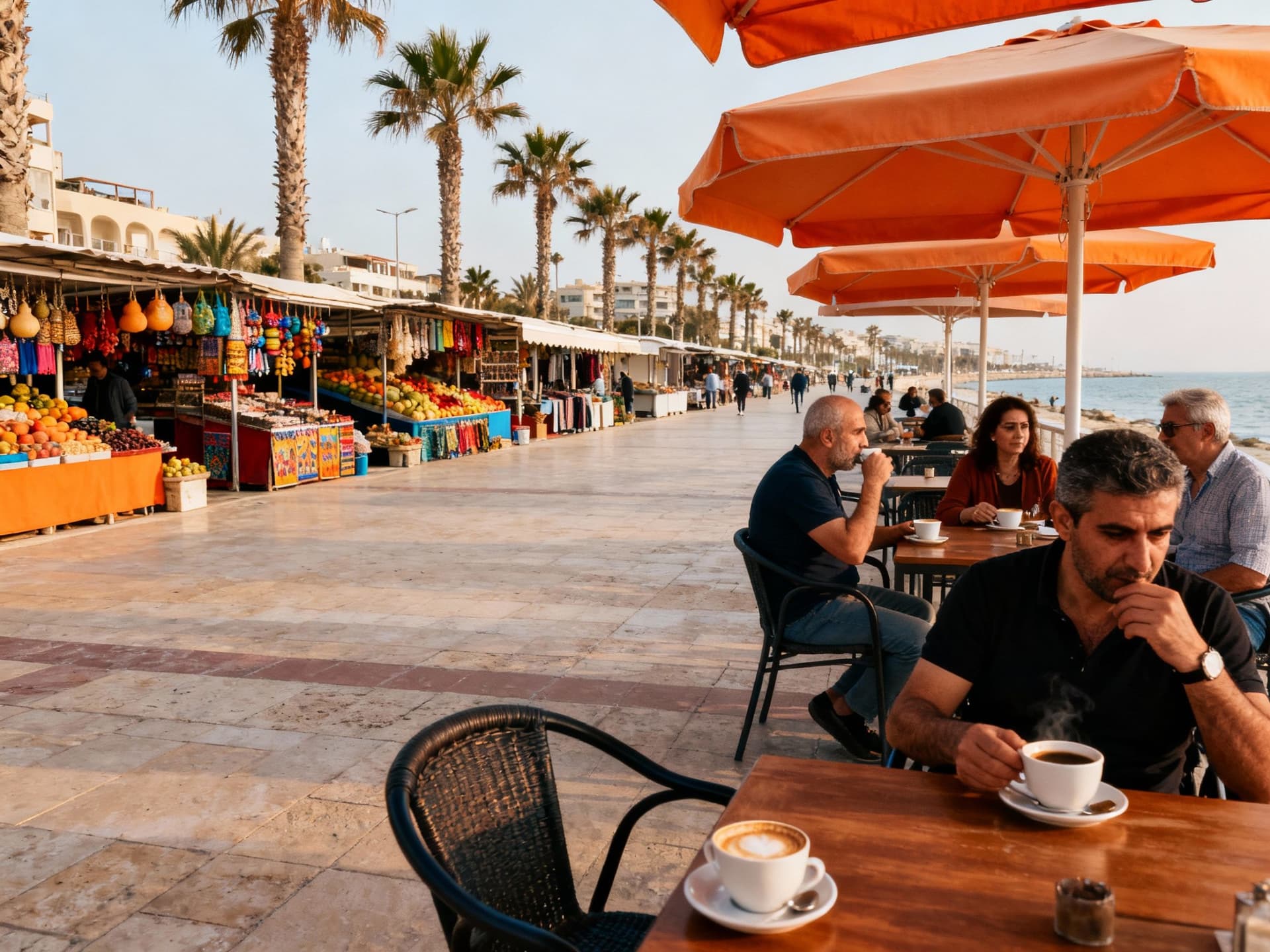When Cyprus’s Summer Gloss Masks Yield Risk
Cyprus’s sunlit lifestyle can mask seasonal and infrastructure risks; stress-test yields (occupancy, water costs, regulation) to safeguard net returns.
Imagine a September morning in Limassol: café tables spilling onto Makariou Avenue, the sea a muted blue beyond the palm line, and local market vendors stacking citrus and halloumi beside English‑speaking expats comparing notes on renovators. That sunlit ease explains why people fall for Cyprus. But for investors the same scene hides seasonal distortions — weeks of tourist demand, concentrated leasing windows and infrastructure stresses that can reprice returns much faster than the view suggests.
Living Cyprus: sunlit rhythms and neighbourhood character

Cyprus feels Mediterranean in a compact package: coastal promenades in Limassol, the layered old town of Nicosia, sleepy tavernas around Paphos, and the Troodos hills where chestnut trees scent autumn hikes. Tourism exceeded four million visitors in 2024, concentrating demand in coastal districts and skewing rental income toward high summer months. That seasonality matters because short‑term peaks can hide weaker year‑round fundamentals beneath the island’s bright surface.
Makariou to Molos: Limassol’s double life
Walk from Makariou Avenue to Molos and you see two markets: daytime professionals, cafés and apartment tenants; and a tourist layer that arrives in June and leaves in September. For investors this means core demand (long‑term rentals to professionals and families) sits beside volatile holiday revenue. Street names like Aristotelous and Neapolis map to markedly different risk profiles — Neapolis often trades steadier, Aristotelous can be heavily seasonal.
Coast, hills and markets: how lifestyle shapes demand
Paphos offers retired expats and year‑round coastal renters; Larnaca benefits from airport connectivity and steady short‑let occupancy; Troodos presents a niche for seasonal retreats. These lived realities determine vacancy profiles, required amenity sets and acceptable cap rates — the same sea view that sells a holiday night may reduce net yield once management and vacancy are included.
Lifestyle highlights: seaside promenades in Limassol, café culture on Ledra Street (Nicosia), archaeological pockets in Paphos, Larnaca salt-lake birdwatching, Troodos hiking trails
Making the move: practical considerations where lifestyle and risk meet

The emotional pull of terraces, seaside tavernas and community markets must be tempered with measurable risks: price appreciation concentrated in prime coastal strips, occupancy seasonality, and emerging infrastructure pressures such as water shortages. Cyprus’s housing market posted strong apartment price rises in recent years; investors should convert that momentum into scenario analyses — what happens to net yield if short‑let occupancy falls 30% off‑peak, or maintenance costs rise with desalination‑driven water prices?
Property types and their real cash flows
Apartments near Limassol seafront deliver higher headline rents but also higher acquisition costs; villas in Paphos can offer stable long‑term tenants but slower capital appreciation. Short‑lets (holiday rentals) can push gross yields above 6–8% in hotspots, yet net yields compress when management, cleaning and regulation are applied. For each asset class, model both gross and net yields, and stress test them against a 10–30% occupancy drop and 10–20% operating cost inflation.
How local experts protect the lifestyle you buy
A local agency does more than show homes: they stress‑test rental assumptions, flag neighbourhood micro‑risks (noise, planning changes, flood zones), and quantify management costs. Ask agents for historical occupancy rates by month, evidence of repeat bookings for short‑lets, and the last five years of comparable sales on the street. Contracts should include clear responsibility splits for maintenance, utilities and seasonal repairs.
Practical move checklist blending lifestyle & finance: 1) Request 12‑month occupancy and rent roll for comparable units 2) Run net yield scenarios (base, -20% occupancy, +15% operating costs) 3) Confirm water supply strategy and likely bills (see desalination plans) 4) Verify seasonal management agreements and cleaning schedules 5) Compare price/sqm on the street, not just the development brochure
Insider knowledge: the expat truth, seasonal wrinkles and local quirks
Expat life in Cyprus is warm and practical — English is widely used, social life clusters around beaches, churches and cafés — yet small‑island constraints surface quickly. Water shortages have pushed the state toward increased desalination capacity, a factor that can raise operating costs for properties and hotels. Expect higher utility bills in dryer years and consider how that affects landlord pass‑throughs and tenant affordability.
What residents wish they’d known
‘Expect the high season — and plan for the rest’ is a common expat refrain. Many buyers overestimate year‑round rental demand because summer figures dominate headlines. The practical tip: buy the lifestyle you want but underwrite the asset as if tourism were 20–30% lower than peak months, then measure upside if demand improves.
Longer‑term lifestyle risks and opportunities
Climate adaptation (desalination, water reuse) will influence running costs and, in some micro‑markets, building design (water‑efficient landscapes, greywater systems). On the positive side, sustained tourism recovery and a stable legal environment keep Cyprus attractive. But good underwriting now requires scenario work: price growth slowdown, regulatory tightening on short‑lets, and higher infrastructure charges.
Risk & sensitivity triggers to model before you buy: - 30% drop in short‑let occupancy - 15% increase in utility and water costs - New local regulations limiting holiday lets in a district - 25% slower capital appreciation over five years
Conclusion: Cyprus sells a life — sun, cuisine, compact communities — and it can deliver sound returns when investments are stress‑tested. Start with the sensory picture (a coffee on Finikoudes esplanade, a Troodos weekend), then run scenarios for occupancy, costs and regulation. Use local agents to source month‑by‑month rent rolls, model net yields under stress, and build contingency buffers for water and management spikes. That way you keep the lifestyle and protect the investment.
Danish relocation specialist who moved to Cyprus in 2018, helping Nordic clients diversify with rental yields and residency considerations.


